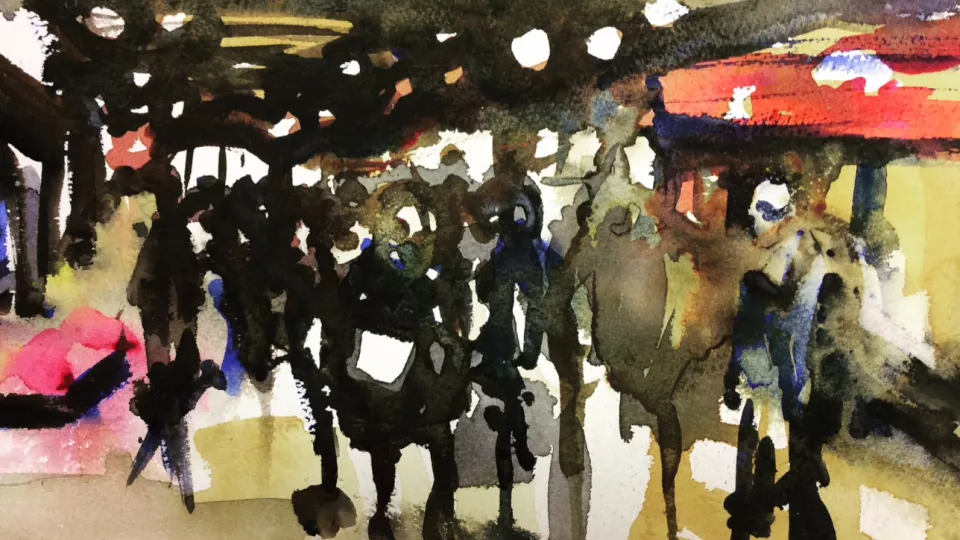New product types and services in the artistic, cultural and creative industries (CCIs) also place high demands on a faster transfer of knowledge and research to society. The CROCUS network focuses on two key themes – the cultural space and the conditions for creativity – and aims to gather interdisciplinary collaborations from across the whole University. It is knowledge that also generates new or advanced insights, which in turn are developed into courses and study programmes, contract education, the establishment of a graduate school and the development of a platform for interdisciplinary research.
"Our main aim is to bring together everyone who is researching or teaching in the cultural and creative industries so that we can search for and run projects together. Through the network, we are able to see other colleagues who are interested in the same issues, and it allows us to see more clearly how to contribute our knowledge to education", says Cecilia Fredriksson, ethnologist and project leader for the network.
New opportunities during the pandemic
CROCUS was formed early in the pandemic and quickly had to transition to a digital network, something that led to easier opportunities for participation, both at a local and international level. Panel discussions or public lectures – anyone who is interested is invited: students, researchers, and industry and cultural organisations in Sweden and abroad.
"It was actually a good thing when everything was shaken up and we quickly had to adapt to the new normal. It provided us with opportunities for better circulation in our network. We were also presented with a very important common theme to work on: culture in crisis", says Ida de Wit Sandström, project coordinator for the network and researcher in service studies.
Over the past year, the network has offered sessions to look at what is happening in a cultural sector in which people have had to shut down, reschedule and cancel, as well as at the subsequent effects.
It is not enough to be a very talented artist; if you want to reach leading positions you also need management skills.
CROCUS is also involved in and contributes to Campus Helsingborg’s new Master’s specialisation, Culture and Creativity Management, which was developed by Katja Lindqvist, a research colleague in service studies.
What conditions and driving forces are required for survival in the CCIs? This new initiative attracts students who already have backgrounds as, for example, artists, art curators or opera singers, and who see a need to learn more about project management and entrepreneurship. During the programme, lecturers encounter the students’ hopes and fears and can provide them with the tools required in a tough industry.
"It is not enough to be a very talented artist; if you want to reach leading positions you also need management skills. The University, particularly in light of rapid digitalisation, needs to be faster and better at offering programmes aimed at parts of the industry or trades and that is where a network like CROCUS plays an important part", says Ida de Wit Sandström.
CROCUS is expanding
As CROCUS grows and develops, more defined specialisations are emerging. It is now possible for researchers, from their desks, to share knowledge and research in new forms of collaboration.
"There is a lot of interest in working more on this and we have so many more channels now", explains Ida de Wit Sandström.
Ida de Wit Sandström is currently the co-author, together with other researchers in CROCUS, of an anthology about creative work and its conditions. She is also part of a research project on art in public spaces for which researchers have been brought together from law, architecture and economics along with art historians and historians.
"We are looking at how art improves quality of life but that the law and the economy can set limits. Who should decide what should go where, where something should be placed? And who is responsible once a work of art has been installed? An interdisciplinary analysis like this one has not been done before."
Cecilia Fredriksson also sees many advantages with the network. She has extensive experience of the intersections between trade, consumption, aesthetics, lifestyle and sustainability and believes she can use her expertise in new ways.
One new and different approach is how to get art and culture to collaborate when presenting research results. As an ethnologist, but also as a watercolour artist, Cecilia Fredriksson is interested in how we can visually communicate research. Last year, she was involved in the creation of an exhibition that displayed our invasive species. In the garden of the Pufendorf Institute for Advanced Studies in Lund, an incubator for new interdisciplinary ideas, they hung 20 large paintings in the trees and the exhibition was opened up to the public.
"The lupin, which is both beautiful and dangerous and the beloved beach rose that is threatening our landscape – how do we respond to that? The exhibition touched on our ambivalent feelings for these invasive species."
Together with other researchers in the network, the idea is to develop a teaching method for how to visualise research.
"I am greatly energised by working with colleagues who have an interest in alternative methods. We do not always have to do things in the usual way. Instead, we can combine different areas of research and their methods. Issues have different values in different contexts and CROCUS becomes an opportunity for me to look at different fields through different lenses."
